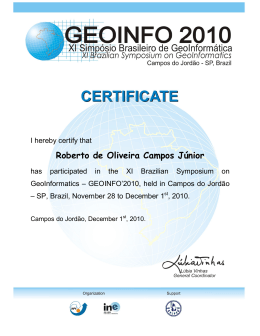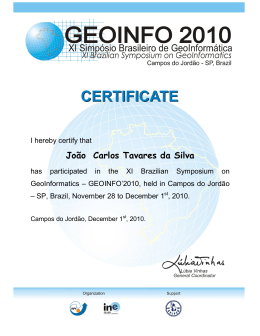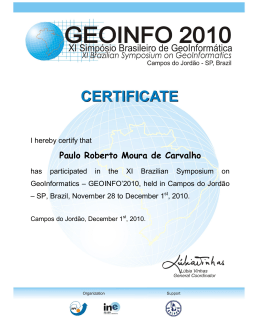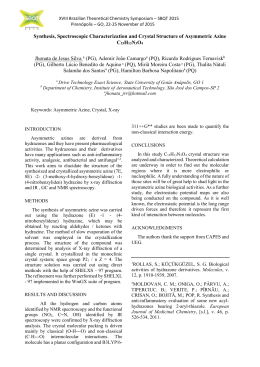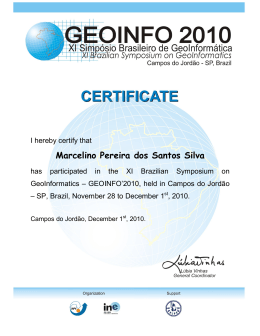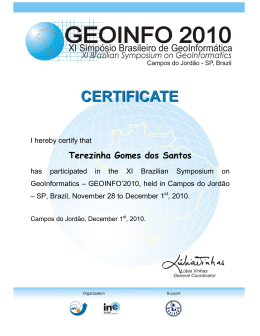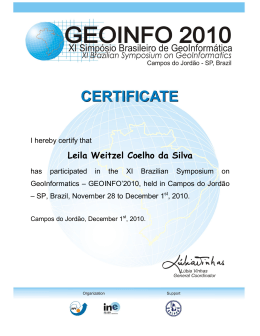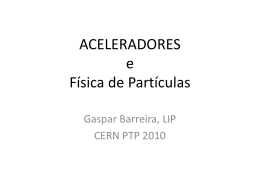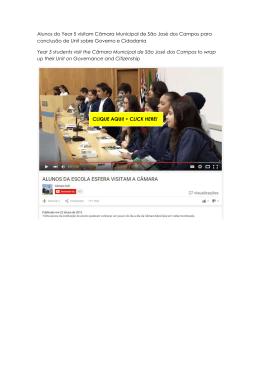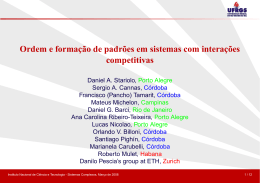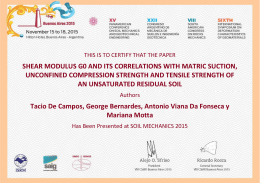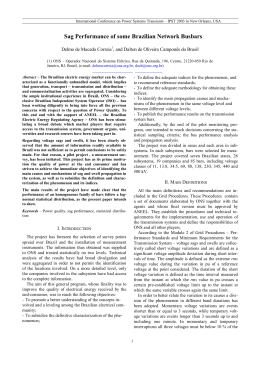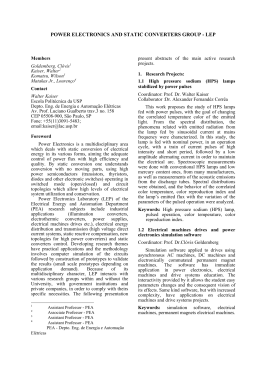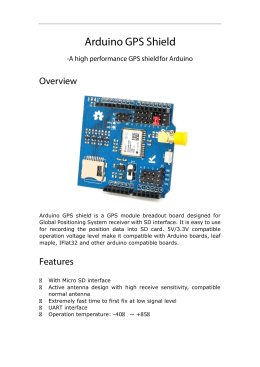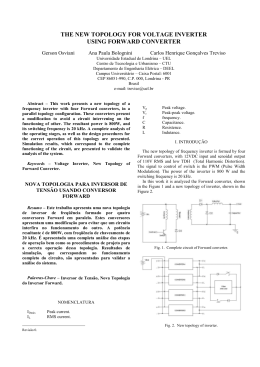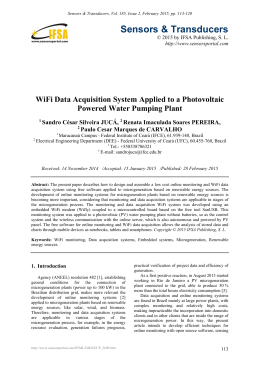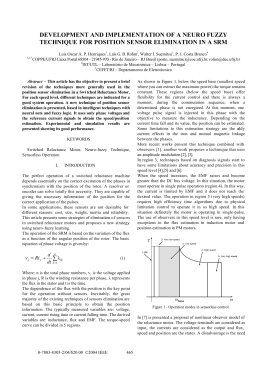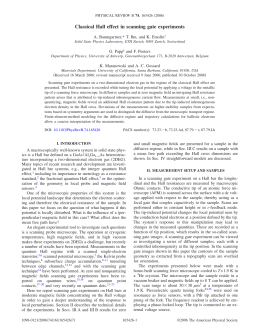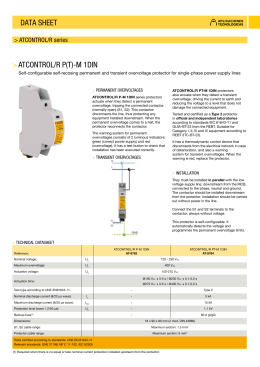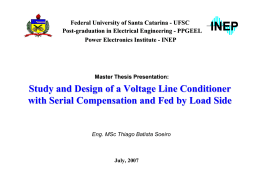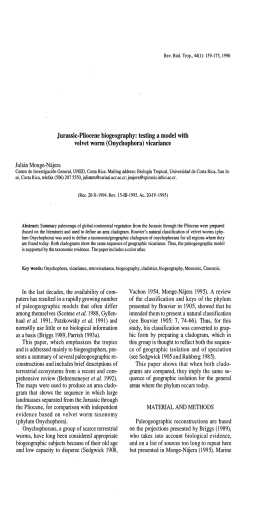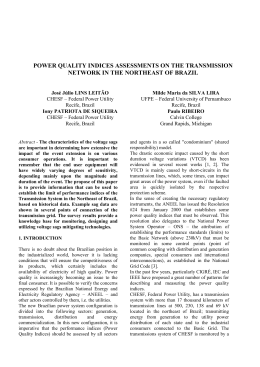Revista Brasileira de Física, Vol. 5, N." 2, 1975 Transmission of Nematic Liquid Crystals in Electric Fields -ANTONIO E. COSTA PEREIRA Instituto Nacional de Pesquisas Espaciais (INPE) - São José dos Campos, S.P. -ABEL ROSATO* Instituto Nacional de Pesquisas Espaciais (INPE) - São José dos Campos, SP Instituto Tecnológico de Aeronautica (ITA) - São José dos Campos, SP Recebido em 23 de Junho de 1975 Measurements to observe the change in the transmission of nematic liquid crystal with respect to the applied voltage were performed. A theoretical model to explain the oscillatory behavior of the transmission for voltages between 2 and 5 volts and for a cell ol' 20 pm thick is presented. Foram feitas m e l d a s para observar a variação da transmissão de cristais líquidos nemáticos em relação a voltagem aplicada. E apresentado um modelo teórico para explicar o comportamento oscilatório da transmissão para voltagens entre 2 e 5 volts e para celas de espessura de 20 pm. 1. Experimental Arrangement We placed a nematic liquid crystal cell (i.e. a liquid crystal layer sandwiched in two transparent electrodes) between two crossed polarizers, similar to an experiment previously reportedl. The cell had a homeotropic alignment, achieved by the way reported by Kahn2. This arrangement stops light when there is no voltage applied between the two transparent electrodes. When an externa1 voltage is applied, a beam of white light is partially filtered in such a way that it is projected as a colour spot on a screen, after crossing the two polarizers and the cell. The colour of the spot changes when the voltage changes. This effect is observed more easily when the voltage is kept between 2V and 5V for a 20 pm thick cell. For a monocromatic beam of light, the transmission of the arrangement changes with voltage, showing maxima and minima, like in Fig. 1. *Conselho Nacional de Pesquisas (CNPq) researcher NORMALISEU TRANSMIÇSION Fig. 1 - Normalized transmission of a nematic liquid crystal cell with homeotropic alignment vs applied electric fíeld for a monocromatic beam of light (A = 6000 A). 2. Theoretical Considerations Looking for an explanation of the experimental behavior of the above mentioned arrangement, let us determine first the way the index of refraction varies inside the LC and then we can calculate the intensity of the transmitted light. ~ e ust suppose that the direction of the two principal dielectric axes of the liquid crystal rotates as we go from A to B or from C to B, according to Fig. 2. Let us suppose further that this rotation is 8(Z)= (2?t/p)Z, being the distance to the nearest plate and p the distance from x,, x2 plane for a 2.n rd rotation. Fig. 2 - Theoretical model for the principal dielectric axes of the liquid crystal; xl is perpendicular to the paper and the distance from A to C is equal to 2h. The relation between the displacement vector D and the electric field vector E, in the rotated coordinate system caracterized by cl, E ~c3, is given by 0; Dj = E2 = &3 E; Ej (2-1) (2-2) The components of D and E in the rotated system are related to the components in a fíxed system of coordinates xl, x2, x3 by the relations: From equations 2.1 to 2.6 we get: D2 = (c2cos28+ ~ ~ s i n E2 ~ 8-) (e3 - c2) sin O cos 8 E3, D3 = - (c3 - c2) sino COSO E~ + ( E ~ C O + S ~c2sin28) ~ E3. (2-7) (2-8) Equations 2.7 and 2.8 give the components of the dielectric dyadic: 0, e2 cos20 sin28, 2 = 3 ~ 3 = 2 - (c3 - ~ 2 sin ) 8 cos 8, = c3 cos28 sin28. E31 = E21 = = ~ + + (2-9) (2- 10) (2-11) (2-12) Let's admit that: the vectors E, D, B, H are of the form E = E. exp io[(n(Z)/c) r.s - t ] , the direction of propagation s is parallel to the Z direction and the refraction index n varies with Z. Then, using Maxweli's equations we get : Taking the components of these expressions and bearing in mind that Ej and that ,513 = = cal = = O, we get: Dk= j The determinant of the coefficients of El, E2, E3 should be zero in order to get a non-trivial solution. From this condition we get the equations : The solution of the first equation, cmpatible with the boundary conwhich corresponds to the ordidition (n = no for Z = O), is n = nary wave. For the second one, using Bernouille's method of solution and considering that n = no for Z = O, we get: To get this expression for n, we used equations (2-10) to (2-12), and the fact that yg = pl= ,LEZ and nz = ~ E J .For O(Z) = constant, these solutions will give us a well known result3. With this we can get the phase difference between the ordinary wave and the extraordinary wave in the analyser. For 8 = (2n/p)Z, the phase difference is where h is half of the width of the cell. We are now ready to find the intensity of the transmitted wave at the analyser. It is given by and it is a function of ( 4 7 4 ~ )The . transmission, that is, the above expression divided by E& was calculated numerically for 4.nlp varying from O to 3 x 10'. The range of 4n/p is determined by the fact that the thickness of the cell is 2h = 20pm and p cannot be smaller than 4h. The numerical result for the transmission is represented in Figure 3. Comparing this theoretical result with the experimental one, represented in Fig. 1, we see that they agree with respect to the oscillations. Physical considerations allow us to assume that there is a connectiori between the applied electric field and 47t/p. In the case that p is smaller than 4h we can consider, along the Z direction, three regions in the crystal liquid layer for calculating the phase delay: one central region, which behaves like a solid crystal, and others two, limited by the plates and the central region, which follows the model presented above. Fig. 3 - Normalized transmission of nematic LC versus 4 4 p , as explained in the texl. References 1. M. F. Schickel and K. Fahrenschon, Appl. Phys. Letter, 16, 391 (1971). 2. J. Frederic Kahn, Appl. Phys. Letters, 22, 386 (1973). 3. M. Born and Wolf E., Principies of Optics, Pergamon Press, New York, 1959.
Download
